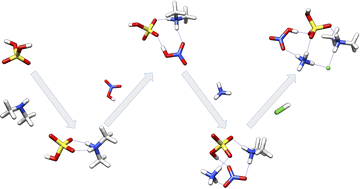Environ. Sci.: Atmos., 2023, Advance Article
DOI: 10.1039/D3EA00118K, Paper
DOI: 10.1039/D3EA00118K, Paper
 Open Access
Open Access This article is licensed under a Creative Commons Attribution-NonCommercial 3.0 Unported Licence.
This article is licensed under a Creative Commons Attribution-NonCommercial 3.0 Unported Licence.Olivia M. Longsworth, Conor J. Bready, Macie S. Joines, George C. Shields
Secondary aerosols form from gas-phase molecules that create prenucleation complexes, which grow to form aerosols. Understanding how secondary aerosols form in the atmosphere is essential for a better understanding of global warming.
To cite this article before page numbers are assigned, use the DOI form of citation above.
The content of this RSS Feed (c) The Royal Society of Chemistry
Secondary aerosols form from gas-phase molecules that create prenucleation complexes, which grow to form aerosols. Understanding how secondary aerosols form in the atmosphere is essential for a better understanding of global warming.
To cite this article before page numbers are assigned, use the DOI form of citation above.
The content of this RSS Feed (c) The Royal Society of Chemistry

